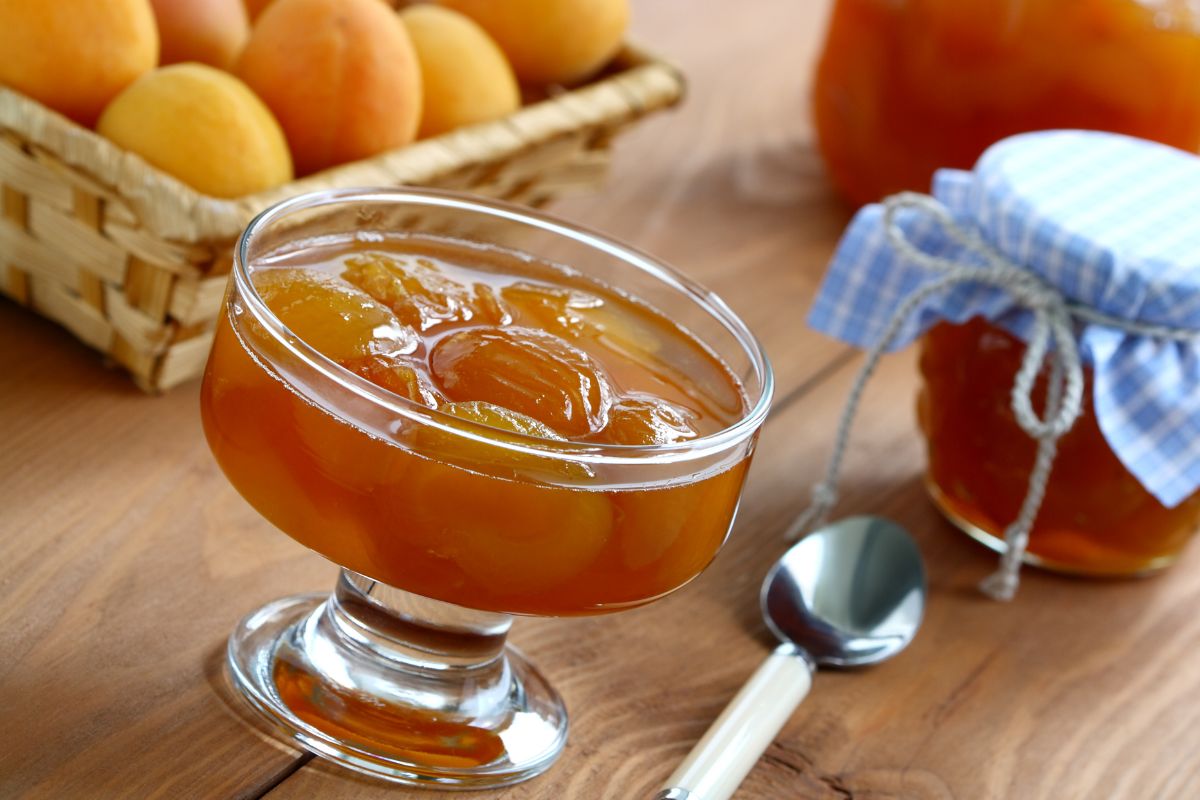Canning apricots begins with blanching and peeling the fruit. Cut the apricots into quarters, and submerge them into hot sugar syrup before hot packing them into canning jars. Process in a water bath canner for 20-25 minutes.
Is it Safe to Can Apricots?
Yes – apricots are safe to can. The fruit is a high-acid food with a pH of 3.30-4.8, making it safe for processing in a water bath or pressure canner. Experts recommend the hot pack method over raw packs to prevent floating fruit and enhance the quality.
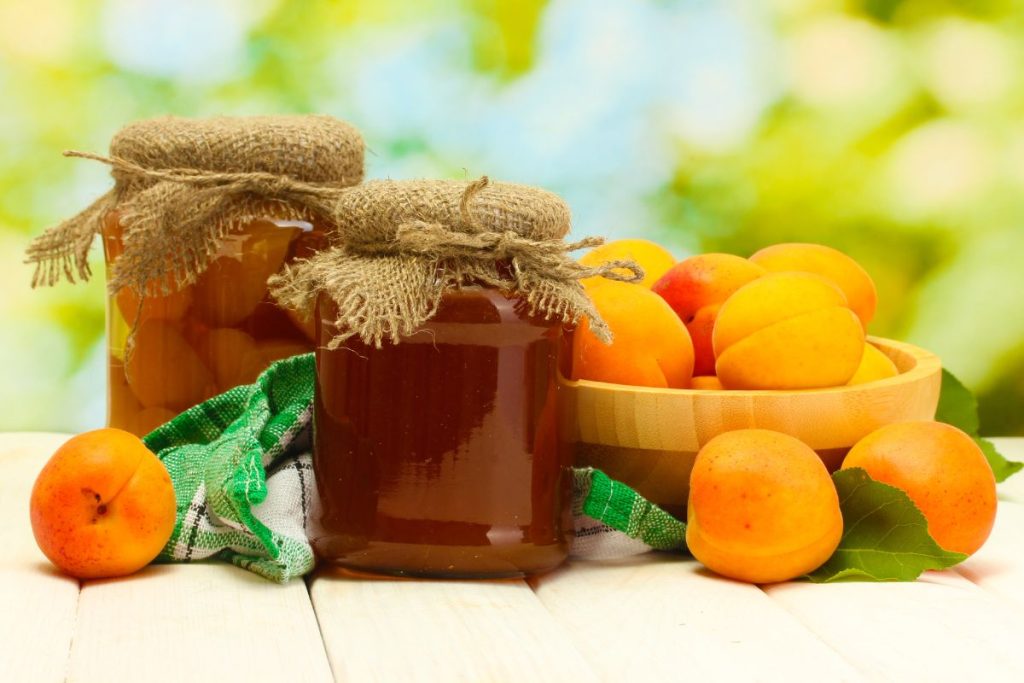
How Do You Prepare Apricots for Canning?
- Choose canning-friendly varieties of apricots, including Loring, John Boy, Redhaven, Sunhigh Glenglo, Ernie’s Choice, and Cresthaven.
- Wash the fruit under running water and scrub gently to remove dirt and pesticide residue.
- Split into halves, then remove the pits.
- Blanch your fruit in boiling water for 30-60 seconds. According to the National Center for Home Food Preservation, blanching prolongs the shelf-life of vegetables and fruits and improves color and flavor.
- Peeling is optional but recommended as it helps prevent a bitter aftertaste from canned apricots.
- Mix ascorbic acid or bottled lemon juice with water to make acidulated water. Dipping the fruits in this solution before canning them prevents discoloration.
How to Can Apricots in a Water Bath Canner
Water bath canning apricots is fun for first-time and seasoned canners alike. Follow these steps for water bath canning quartered or diced apricots.
- Wash wide-mouth canning jars, lids, and rings in hot soapy water. Rinse well and set lids aside to dry. Cover jars in simmering water until ready to use.
- Prepare your water bath canner. Fill it halfway with water, add a canning rack, and set it on a burner over medium heat.
- Choose 16 pounds of ripe, firm, mature, uniformly-colored apricots for canning.
- Wash the fruits thoroughly under cool water while scrubbing gently with a vegetable brush. Do not soak the apricots.
- In a separate large pot, bring clean water to a boil. Dip your fruits in the boiling water for 30-60 seconds to make peeling easy.
- After blanching, remove and immerse them immediately in ice-cold water to stop the cooking process. Gently pull the skins off of the fruit and discard them.
- Cut the apricots into halves using a sharp knife and remove the pits. Cut each half into quarters.
- Make an ascorbic acid solution by adding one teaspoon of ascorbic acid to 2 cups water, and submerge the apricots for 3-5 minutes to prevent discoloration.
- In a large saucepot, make a light sugar syrup by combining 9 cups water with 2 ¼ cups sugar and bring the mixture to a boil.
- Once the syrup boils, drain apricots from the acidulated water and add them to the syrup. Simmer the fruits until heated through. You can substitute the light syrup with boiling apple juice, white grape juice, or water if preferred.
- Ladle the hot apricot slices into hot jars with the cut side facing down, leaving 1/2 inch headspace. Top each jar with hot canning syrup.
- Remove air bubbles using a plastic butter knife or wooden chopstick. Wipe the jar rims with a clean damp cloth or paper napkin.
- Place sterilized lids on the jars and screw rings on until fingertip-tight to seal the jars.
- Carefully load the jars upright into your boiling water canner using canning tongs. Attach the canner’s lid and let the water resume a rolling boil. Ensure the water level is 1-2 inches above the jar tops.
- Set a processing time of 20-35 minutes for pint jars or 25-40 minutes for quart jars, adjusting time per altitude:
Water Bath Processing Minutes Per Elevation
| Altitude (ft) | 0 – 1,000 | 1,001 – 3,000 | 3,001 -6,000 | 6,001 + |
| Pints | 20 | 25 | 30 | 35 |
| Quarts | 25 | 30 | 35 | 40 |
- Once your timer beeps, turn off your burner, open the canner’s lid, and allow jars to sit in water for 5 minutes.
- Using a jar lifter, remove processed jars from the hot water. Place them on a towel-lined counter to sit for 12-24 hours.
- After cooling, check the seals. Vacuum-sealed jars have a concave shape, curve downwards, and don’t flex up and down when pressed.
- Refrigerate any unsealed jars and use them within a week.
- Remove screw bands from sealed jars, wipe them, and label them with the canning date and contents.
- Store canned apricots in a cool, dry, dark pantry and enjoy them all year long!
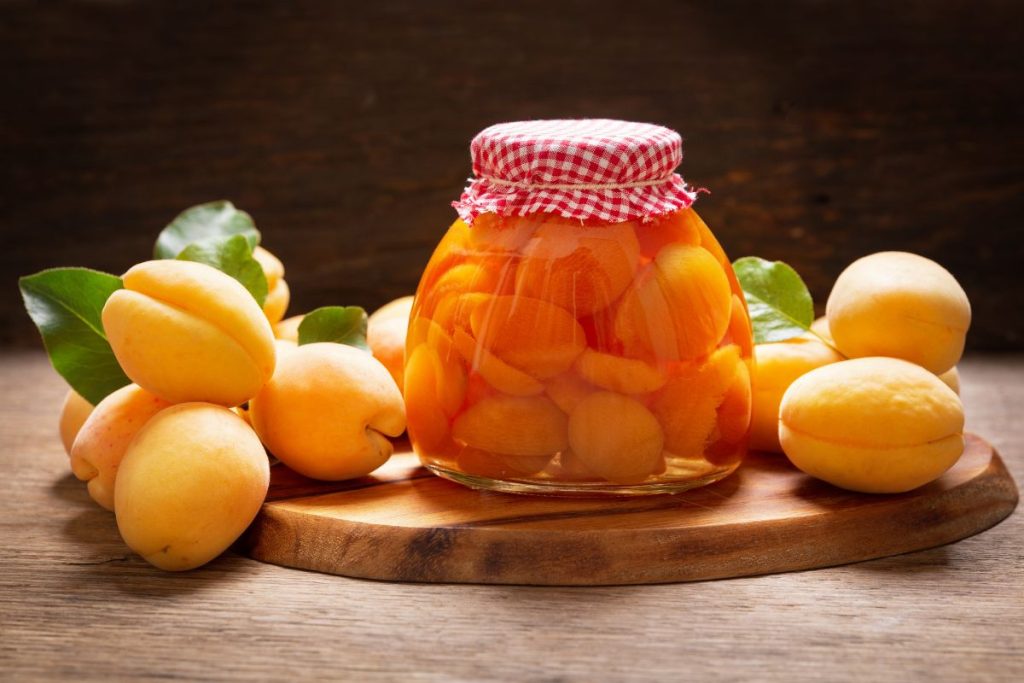
How Long Does it Take to Can Apricots?
Processing apricot halves in a water bath takes 20-45 minutes. Canning apricot jam in a water bath requires 5 to 15 minutes, depending on elevation. The recommended processing time in a pressure canner for apricots in pints or quart jars is 5-10 minutes at 5-6 lbs of pressure.
Print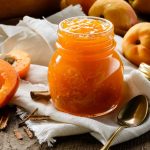
Apricot Jam Canning Recipe
- Total Time: 2 hours, 10 minutes
Description
No pectin? No problem! Make this fruity spread a staple in your home using this no-hassle apricot jam canning recipe.
Ingredients
- 8 cups fresh apricots – peeled, pitted, and crushed
- ¼ cup lemon juice
- 6 cups white sugar
Instructions
- Wash all canning equipment in warm soapy water. Rinse well and set lids and rings aside to air dry. Sterilize canning jars by covering them in boiling water for 10 minutes.
- Fill your water bath canner halfway with water and place it on your stove to preheat to 180 degrees Fahrenheit. Place a jar rack at the bottom.
- Wash fresh, ripe apricots under clean, cool water. Rinse well, slice into halves, remove pits, and mash them with a potato masher.
- Combine crushed apricots, lemon sugar, and sugar in a large pot. Set on a stove and bring to a boil using medium heat. Stir frequently for the sugar to dissolve properly.
- Once the mixture boils, continue cooking rapidly while stirring for about 25 minutes until the mixture becomes thick.
- Turn off the heat and skim off any foam with a clean spoon.
- Fill hot apricot jam into sterilized canning jars using a clean canning funnel, leaving ¼ inch of headspace.
- Run a wooden stir stick along the jar insides to remove air bubbles. Wet a clean cloth with hot water or vinegar and wipe the jar rims clean.
- Place 2-piece metallic canning lids on the jars and screw until fingertip tight.
- Load the jars into your water bath canner using canning tongs. Keep them upright, as tilting may cause spilling. Add water, if necessary, to ensure the level is 1-2 inches above your jar tops.
- Carefully cover the canner with its lid. Adjust heat to high for water to resume a full boil.
- After the water boils vigorously, set your timer for 5-15 minutes per altitude:
Water Bath Processing Per Elevation:
- 0 – 1,000ft: 5 minutes
- 1,001 – 6,000ft: 10 minutes
- 6,001ft and up: 15 minutes
Post Processing
- Once the recommended time is complete, turn off your burner. Open the lid and wait for 5 minutes.
- Remove the jar and transfer them to a cooling rack or a cushioned, draft-free surface to cool undisturbed for 12-24 hours.
- Check seals by pressing on the center of each lid to ensure the lids do not flex up and down. If they do flex, they did not seal properly and must be re-processed with new canning lids or refrigerated and eaten within 5-7 days.
- Remove screw bands from the sealed jars. Wipe them and label them with the contents and canning date.
- Store the jars in a cool, clean, dry place away from moisture and sunlight.
- Prep Time: 20 minutes
- Canning Time: 10 minutes
- Cook Time: 40 minutes
Nutrition
- Serving Size: 2 tablespoons
- Calories: 105kcal
- Sugar: 26g
- Fat: 0g
- Saturated Fat: 0g
- Carbohydrates: 27g
- Fiber: 1g
- Protein: 0g
- Cholesterol: 0g
What is the Difference Between Apricot Jam and Apricot Preserves?
Some key differences between apricot jam and preserves include:
- Fruit preparation: Preserves are made using whole fruit, while apricot jam requires mashing the fruit into a finer consistency.
- Texture: Apricot jam has a smoother texture, while apricot preserves are thick and chunky.
- Uses: Jams make excellent spreads on bread and cakes, while preserves are best eaten from the jar or used as ice cream topping.
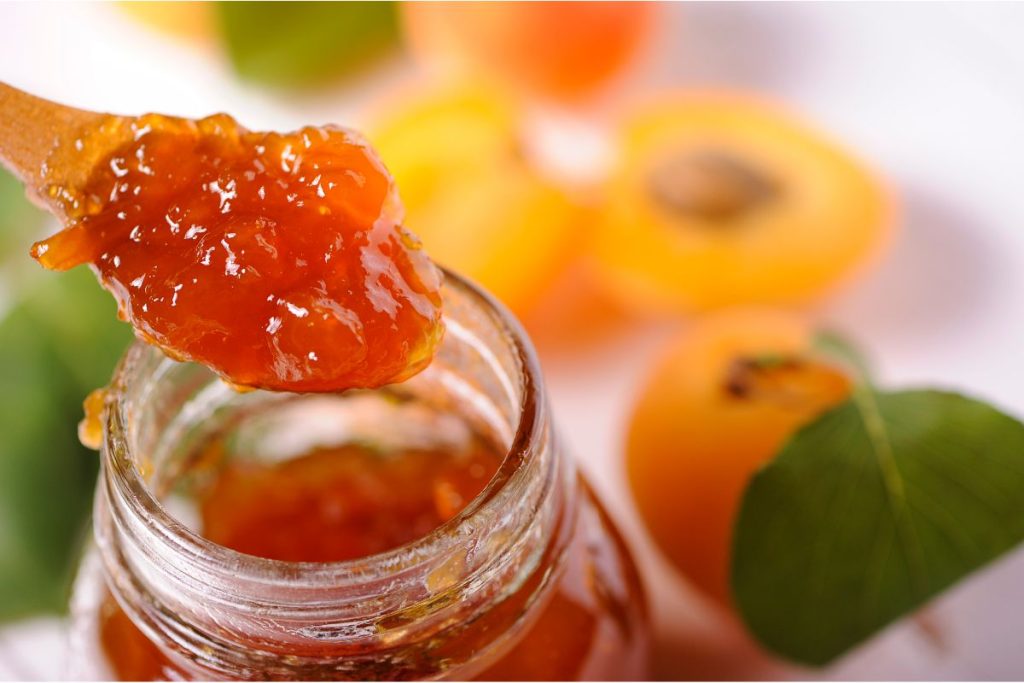
What are the Benefits of Canning Apricots?
- Convenience: Canned apricots are a convenient ingredient for smoothies and baking recipes.
- Extended shelf life: Home canning apricots make them more shelf stable, lasting up to 18 months in your pantry.
- Health benefits: Apricots are excellent sources of vitamins C, A, and E, fiber, carbs, and potassium. Some studies link the antioxidants lutein and zeaxanthin, present in apricots, to improved vision and eye health.
- Saves costs: Canning apricots allow you to preserve in-season fruits for later use.
- Versatility: Canned apricots are an excellent addition to many recipes, including smoothies, desserts, ice cream, and apricot-glazed pork chops.
How Long Do Canned Apricots Last?
According to the USDA, high-acid canned foods retain their best quality for 12-18 months. Store the shelf-stable jars in a cool, dry place away from fluctuating temperatures. If you open a jar, refrigerate and use the contents within 3-4 days.

